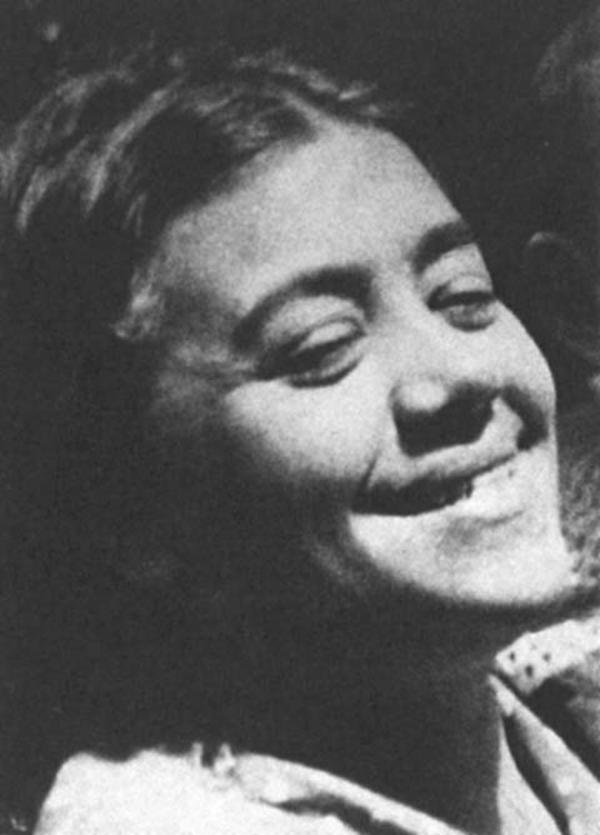Swedish Translation:
Ett kärleksbrev
U.N. Gnesin
Jag skulle vilja skriva till någon,
ett kärleksbrev, ett kärleksbrev.
Plantans rötter, ”kärlek”
växer djupt i mitt hjärta.
En planta, taggig och vild,
utsådd av höstens vind.
Ack, den är ingen planta, min kärlek,
den är en liten varelse, naken och blind.
En planta med blod och liv
som slits itu, som med gråt och skri
ömkligt söker med sin lilla mun
bröstet, som är torrt eller lång bort.
Den hungriga lilla varelsen, kärlek.
Skälver och gråter, tills den förtvinar.
Vem har sått och fött den?
Vem plågar och sliter itu mitt hjärta?
Jag skulle vilja skriva till någon,
ett kärleksbrev, ett kärleksbrev.
English Translation:
A Love Letter
U.N. Gnesin
I would like to write a love letter
to someone, a letter of love:
the seedling called “love” is rooted
deep in my heart.
The seedling is barbed and wild
and sown with an autumn wind.
No, my love is not a seedling:
it’s a newborn, naked and blind.
With blood and with life, the seedling
fights and fusses and cries:
its mouth searches pathetically
for a breast that is distant or dry.
Love is a hungry newborn:
it cries itself blue in the face.
Who has sown and birthed it?
Who gnaws and shreds my heart?
I would like to write a love letter
to someone, a letter of love.
Transliteration:
A libebriv
U.N. Gnesinen
Ikh volt veln tsu emetsn shraybn
A libebriv, a libebriv.
Di vortslen fun flantsung “di libe”
Vaksn in hartsn maynem tif.
A vilde un shtekhike flantsung
Farzeyte fun harbstikn vint.
Akh, s’iz nit keyn flantsung, mayn libe,
S’iz a nefeshl naket un blind.
Mit blut un mit lebn a flantsung
Vi s’rayst zikh, vi s’veynt un vi s’shrayt,
Rakhmonesdik zukht mitn maylkhl
Di brust, vos iz pust oder vayt.
Dos hungerike nefeshl, libe,
Varft zikh un veynt, biz s’vert shvarts.
Ver hot es farzeyt un geborn?
Ver nogt es un rayst mir mayn harts?
Ikh volt veln tsu emetsn shraybn
A libebriv, a libebriv.
In Yiddish
אַ ליבעבריוו
א. נ. גנעסינען
איך וואָלט וועלן צו עמעצן שרײַבן
אַ ליבעבריוו, אַ ליבעבריוו.
די וואָרצלען פֿון פֿלאַנצונג „די ליבע“
וואַקסן אין האַרצן מײַנעם טיף.
אַ ווילדע און שטעכיקע פֿלאַנצונג,
פֿאַרזייטע פֿון האַרבסטיקן ווינט.
אַך, ס׳איז ניט קיין פֿלאַנצונג, מײַן ליבע,
ס׳איז אַ נ פֿשל נאַקעט און בלינד.
מיט בלוט און מיט לעבן אַ פֿלאַנצונג
ווי ס׳רײַסט זיך, ס׳וויינט און ווי ס׳שרײַט,
רחמנותדיק זוכט מיטן מײַלכל
די ברוסט, וואָס איז פּוסט אָדער ווײַט.
דאָס הונגעריקע נפֿשל, ליבע,
וואַרפֿט זיך און וויינט, ביז ס׳ווערט שוואַרץ.
ווער האָט עס פֿאַרזייט און געבאָרן?
ווער נאָגט עס און רײַסט מיר מײַן האַרץ?
איך וואָלט וועלן צו עמעצן שרײַבן
אַ ליבעבריוו, אַ ליבעבריוו.


